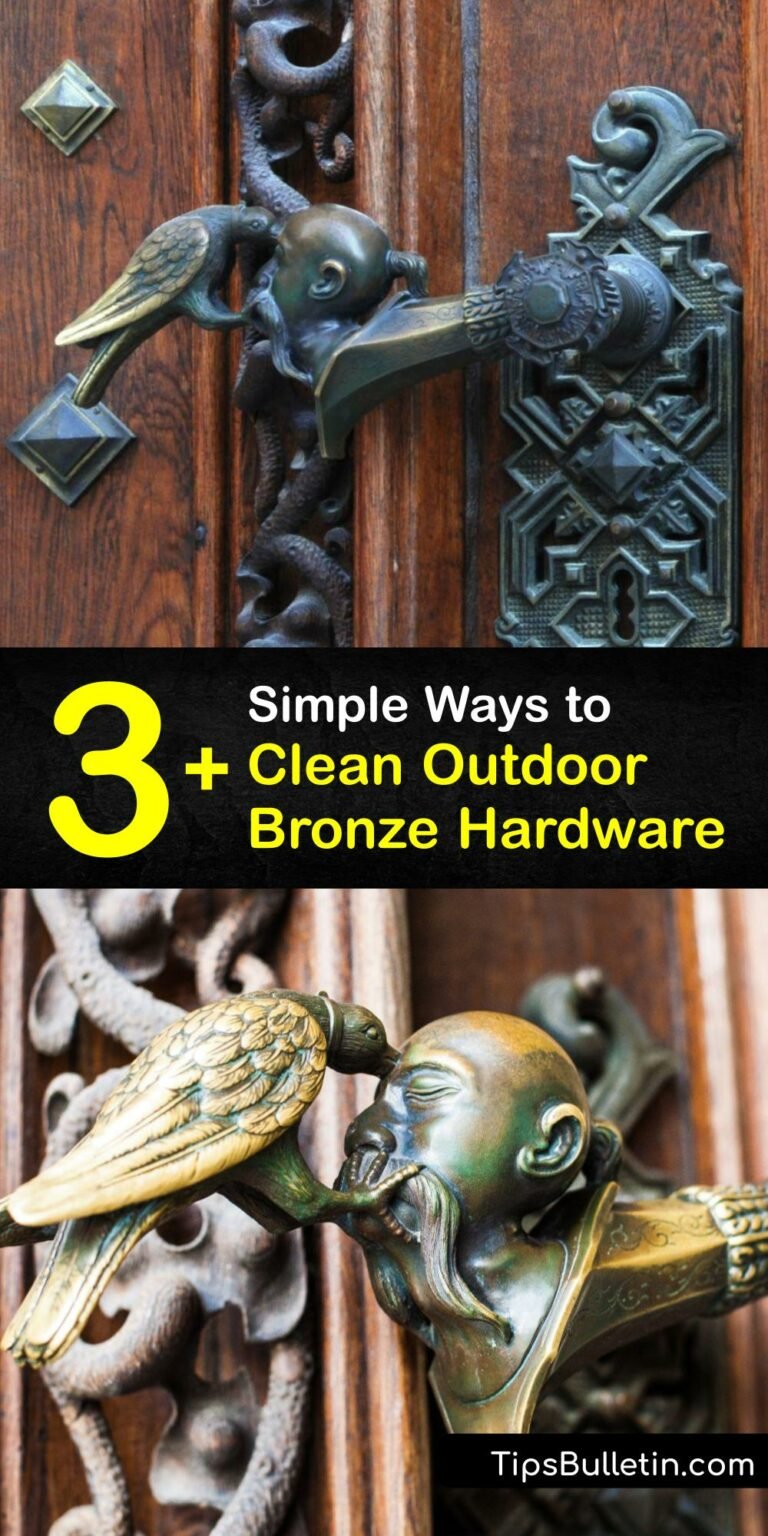
When you’re ready to tackle this project, remember that bronze has unique properties. It can be prone to tarnishing, but that’s part of its charm. Many homeowners love that aged look, but too much buildup can lead to functionality issues. If you’re using something like a Schlage or Kwikset latch, following the best practices can help extend its life and keep it looking fresh without compromising its character. Let’s dive into the best ways to clean and care for your aged bronze door latches.
Understanding the Composition of Bronze
Before you start cleaning, it’s essential to understand what you’re dealing with. Bronze is an alloy primarily made of copper and tin. This combination gives it strength and resistance to corrosion, but over time, it can also develop a greenish patina known as verdigris. Honestly, while some people love this patina for its antique charm, if your latch is starting to look more like a science experiment gone wrong than a piece of hardware, it’s time for a clean.
Knowing your bronze can help you choose the right cleaning approach. For instance, if your bronze latch is highly tarnished, you don’t want to risk damaging it with harsh abrasives. Instead, you’ll need gentler cleaning methods that respect the material while restoring its shine. Consider your latch’s finish—whether it’s polished or has a natural, matte look. This distinction will guide your cleaning product choices.
Essential Cleaning Supplies
Gathering the right supplies before starting is crucial for the best results. Here’s a simple shopping list to get you started.
- Soft cloths or microfiber towels
- Soap (mild dish soap works best)
- White vinegar or lemon juice
- Baking soda
- Non-abrasive scrub brush or toothbrush
- Clear lacquer (optional)
It might feel tempting to grab the strongest cleaner you can find, but here’s the thing: harsh chemicals can strip the metal and ruin that lovely patina. Stick with these milder cleaning agents, as they’re effective without being overly abrasive. Also, using a non-abrasive scrub brush ensures you lift grime without scratching the surface.
Step-by-Step Cleaning Process
Now that you’ve gathered your supplies, it’s time for the fun part—cleaning! Follow these steps to bring your bronze latch back to life.
Step 1: Prepare the Latch
First, remove the latch from the door if possible. It’s easier to clean without it in place, plus you don’t risk scrubbing the door itself.
Step 2: Soak
Mix a few drops of mild soap with warm water. Submerge a cloth in the soapy water and gently wipe down the latch. If it’s particularly grimy, let the latch soak in the solution for a few minutes.
Step 3: Scrub
After soaking, use your non-abrasive scrub brush to gently scrub away any stubborn dirt. Work in circular motions, focusing on areas with heavy tarnish or buildup.
Step 4: Rinse and Dry
Rinse the latch with clean water and dry it thoroughly with a soft cloth. Leaving moisture can lead to further tarnishing, so be diligent here.
Step 5: Optional Patina Restoration
If your latch has tarnished significantly, you might want to mix equal parts of white vinegar and baking soda to form a paste. Apply it gently and let it sit for about 15 minutes. Then scrub gently and rinse. This step helps to restore that sparkling shine without damaging the bronze.
Maintaining Your Bronze Latch
Now that your latch is clean, how do you keep it looking great? Maintenance is key to ensuring that you don’t have to repeat the deep clean too often. Regular dusting with a soft cloth can prevent grime buildup.
Additionally, consider applying a clear lacquer once it’s fully dry. This protective layer can help fend off tarnishing and keep moisture at bay. Just be cautious—make sure the surface is completely clean before applying the lacquer to avoid trapping any dirt underneath.
Dealing with Tough Stains
Sometimes, despite your best efforts, tough stains can linger. If you’re struggling with spots that just won’t budge, here are a few alternative solutions.
Natural Solutions
You can use lemon juice mixed with baking soda for a potent stain-fighting paste. Apply it, let it sit, and scrub gently. The acidity in the lemon helps break down stains without harsh chemicals.
Commercial Cleaners
If natural methods aren’t cutting it, consider looking for a commercial bronze cleaner. Just remember to read the product label to ensure it’s safe for use on your specific latch type. Always test on a small, inconspicuous area first.
When to Seek Professional Help
Certain situations call for professional attention, especially if your latch is part of a more extensive antique door or has significant historical value. If you notice severe corrosion or damage, it might be wise to consult an expert in antique restoration.
They can provide specialized care tailored to your latch’s material, ensuring no damage occurs during the cleaning process. Plus, they might offer advice on preserving such pieces in the long run.
Cleaning aged bronze door latches may seem like a small task, but with these best practices, you’re taking significant steps towards not just maintaining a functional item, but also preserving a piece of history. With regular care and the right approach, your latch can continue to charm for years to come. Remember, this isn’t just about cleaning; it’s about nurturing a story that goes beyond the simple mechanism. So roll up your sleeves, grab those supplies, and get your latch back to its shining best!
